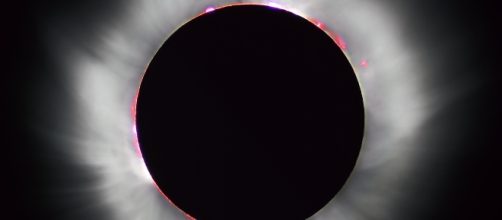Monday, August 21, is sure to be a great day in the United States of America. Yes, Trump is still President. And yes, North Korea still has their nuclear weapons program. So why is Monday going to be so great? Monday will see a Total Solar Eclipse in the United States. People all across America will be able to watch as the moon passes in front of the sun. It is the first time in 99 years that there has been such an incredible eclipse that people from coast-to-coast in America can see.
And of course, not all of us are solar boffins. So here is just about everything you need to know about the solar eclipse and how to watch it.
What is a total solar eclipse?
A solar eclipse is when the moon passes between Earth and the Sun. According to New Scientist, the moon then casts a shadow on the Earth. As Monday is a total solar eclipse, there will be a brief period (about 2 to 3 minutes) where the moon completely blocks the sun and casts a shadow across the United States. Total solar eclipses are quite rare. In fact, the next total solar eclipse is expected to only occur in July 2019 and it will best be seen from South America.
According to New Scientist, many scientists will be using this rare occurrence to further some research. Some, for example, plan on using it to find out more about the sun. It is only during a solar eclipse that one can really afford to look at the sun properly, as most of its light will be blocked out by the moon.
Other scientists are aiming to see if the shadow on the Earth causes a drop in the Earth's temperature.
How to watch this eclipse?
According to NPR, you need proper eye-wear to check out this cool event. Sunglasses will not provide you with the necessary level of protection. Professor Ralph Chou, from the University of Waterloo, has warned that even quick unprotected glances can be dangerous. The sun may damage the back of your eye. So, if you're planning on watching the eclipse, get yourself some proper solar viewers.
Furthermore, the total solar eclipse will only be seen in some parts of the U.S. According to NPR, the total eclipse will only be seen in a 65-mile wide strip between Oregon and South Carolina.
You will still see the eclipse in the rest of the United States, it might just be a partial eclipse.
So, if you're out and about in the U.S. on Monday, be sure to grab your solar viewers and watch as the moon passes before the sun! It's going to be many years before such an event takes place in the United States again and it's something not to miss!


